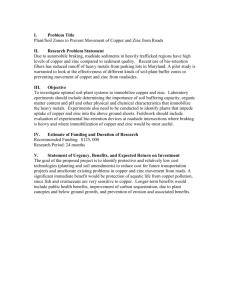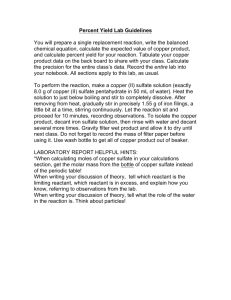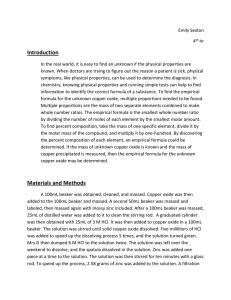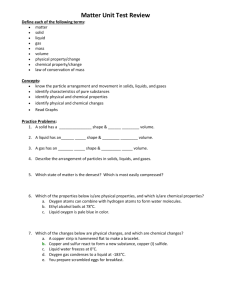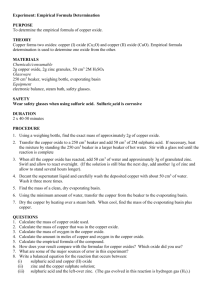Determination of the Empirical Formula of Copper Oxide Introduction
advertisement
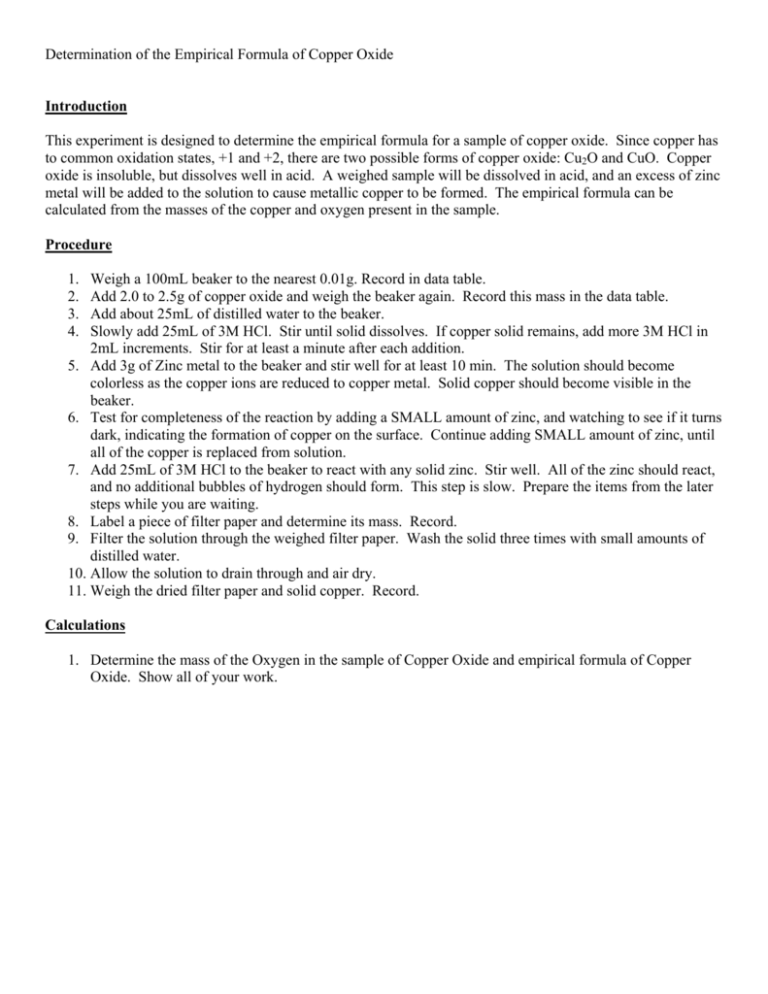
Determination of the Empirical Formula of Copper Oxide Introduction This experiment is designed to determine the empirical formula for a sample of copper oxide. Since copper has to common oxidation states, +1 and +2, there are two possible forms of copper oxide: Cu2O and CuO. Copper oxide is insoluble, but dissolves well in acid. A weighed sample will be dissolved in acid, and an excess of zinc metal will be added to the solution to cause metallic copper to be formed. The empirical formula can be calculated from the masses of the copper and oxygen present in the sample. Procedure 1. 2. 3. 4. Weigh a 100mL beaker to the nearest 0.01g. Record in data table. Add 2.0 to 2.5g of copper oxide and weigh the beaker again. Record this mass in the data table. Add about 25mL of distilled water to the beaker. Slowly add 25mL of 3M HCl. Stir until solid dissolves. If copper solid remains, add more 3M HCl in 2mL increments. Stir for at least a minute after each addition. 5. Add 3g of Zinc metal to the beaker and stir well for at least 10 min. The solution should become colorless as the copper ions are reduced to copper metal. Solid copper should become visible in the beaker. 6. Test for completeness of the reaction by adding a SMALL amount of zinc, and watching to see if it turns dark, indicating the formation of copper on the surface. Continue adding SMALL amount of zinc, until all of the copper is replaced from solution. 7. Add 25mL of 3M HCl to the beaker to react with any solid zinc. Stir well. All of the zinc should react, and no additional bubbles of hydrogen should form. This step is slow. Prepare the items from the later steps while you are waiting. 8. Label a piece of filter paper and determine its mass. Record. 9. Filter the solution through the weighed filter paper. Wash the solid three times with small amounts of distilled water. 10. Allow the solution to drain through and air dry. 11. Weigh the dried filter paper and solid copper. Record. Calculations 1. Determine the mass of the Oxygen in the sample of Copper Oxide and empirical formula of Copper Oxide. Show all of your work.



